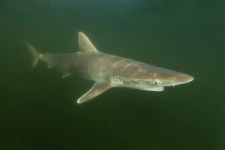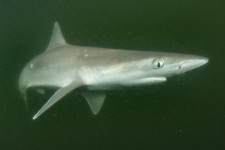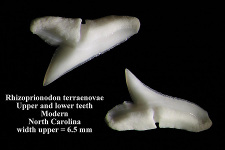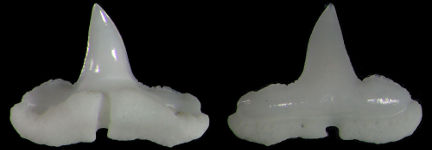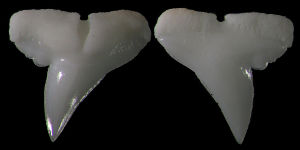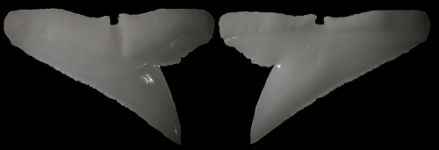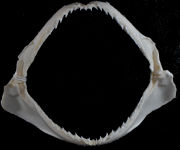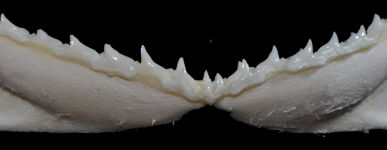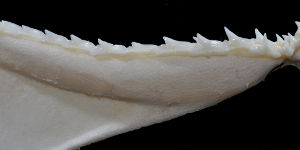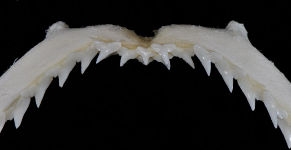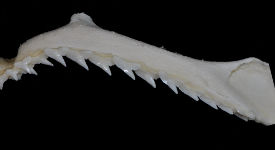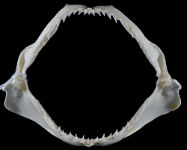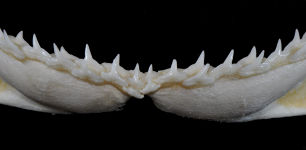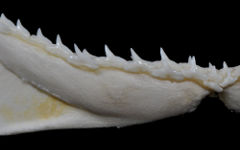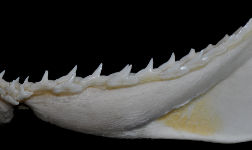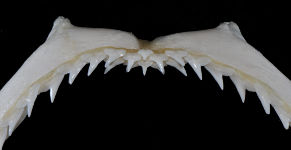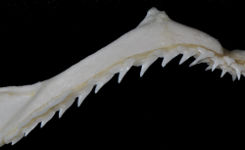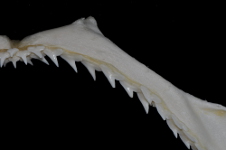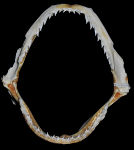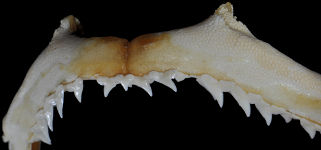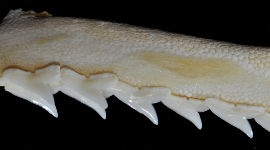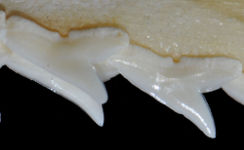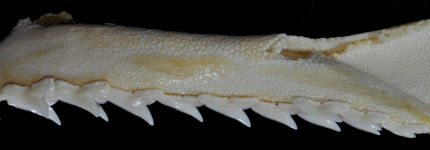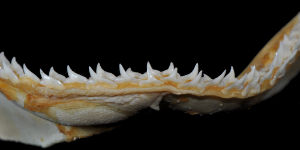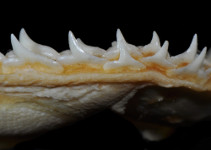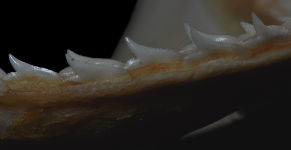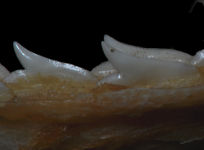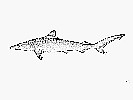Rhizoprionodon terraenovae
(Richardson, 1836)
Atlantic sharpnose shark
Classification: Elasmobranchii Carcharhiniformes Carcharhinidae
Reference of the original description
The Fish. In Fauna Boreali–Americana; or the zoology of the northern parts of British America: containing descriptions of the objects of natural history collected on the late northern land expeditions, under the command of Sir John Franklin, R.N. Fauna Boreali–Americana; or the zoology of the northern parts of British America: ... Part 3: i–xv + 1–327, Pls. 74–97
The Fish. In Fauna Boreali–Americana; or the zoology of the northern parts of British America: containing descriptions of the objects of natural history collected on the late northern land expeditions, under the command of Sir John Franklin, R.N. Fauna Boreali–Americana; or the zoology of the northern parts of British America: ... Part 3: i–xv + 1–327, Pls. 74–97
Image of the original description
No image in first description.
No image in first description.
Synonyms / new combinations and misspellings
Carcharhinus terrae-novae, Carcharias terraenovae, Carcharias (Scoliodon) terrae-novae, Lamna terrae-novae, Rhizoprionodon aff. terranovae, Rhizoprionodon cf. terra-novae, Rhizoprionodon cf. terraenovae, Rhizoprionodon terrae-novae, Rhizoprionodon terraenova, Rhizoprionodon terraenovae, Rhizoprionodon terranovae, Rhizoprionodon (Rhizoprionodon) terraenovae, Rhizoprionodon (Scoliodon) terraenovae, Scoliodon terra-novae, Scoliodon terrae novae, Scoliodon terrae-novae, Scoliodon terraenovae, Scoliodon terranovae, Squalus terraenovae, Squalus (Carcharias) terraenovae
Carcharhinus terrae-novae, Carcharias terraenovae, Carcharias (Scoliodon) terrae-novae, Lamna terrae-novae, Rhizoprionodon aff. terranovae, Rhizoprionodon cf. terra-novae, Rhizoprionodon cf. terraenovae, Rhizoprionodon terrae-novae, Rhizoprionodon terraenova, Rhizoprionodon terraenovae, Rhizoprionodon terranovae, Rhizoprionodon (Rhizoprionodon) terraenovae, Rhizoprionodon (Scoliodon) terraenovae, Scoliodon terra-novae, Scoliodon terrae novae, Scoliodon terrae-novae, Scoliodon terraenovae, Scoliodon terranovae, Squalus terraenovae, Squalus (Carcharias) terraenovae
Types
Rhizoprionodon terraenovae
Rhizoprionodon terraenovae
Description :
Citation: Rhizoprionodon terraenovae (Richardson, 1836): In: Database of modern sharks, rays and chimaeras, www.shark-references.com, World Wide Web electronic publication, Version 12/2025
Please send your images of "Rhizoprionodon terraenovae" to info@shark-references.com
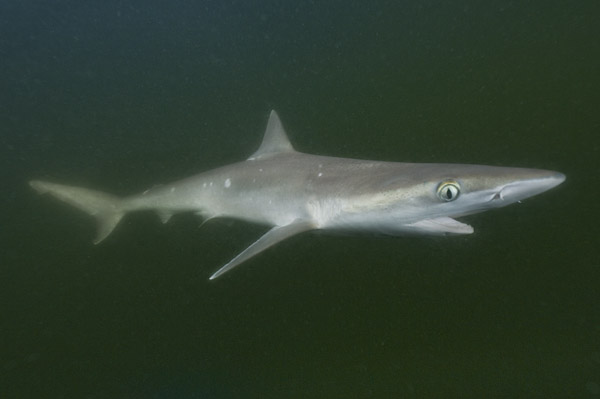
Rhizoprionodon terraenovae (Richardson, 1836), © Andy Murch Elasmodiver

Rhizoprionodon terraenovae (Richardson, 1836), © Andy Murch Elasmodiver
Common names
 Cazón,
Cazón,  Cazón chino,
Cazón chino,  Cazón de ley,
Cazón de ley,  Cazón de playa,
Cazón de playa,  Cazón picudo atlántico,
Cazón picudo atlántico,  Tollito,
Tollito,  Tollo hocicón,
Tollo hocicón,  Chien de mer,
Chien de mer,  Requin aiguille gussi,
Requin aiguille gussi,  Requin à nez pointu,
Requin à nez pointu,  Atlantic Sharpnose Shark,
Atlantic Sharpnose Shark,  Atlantic sharp-nosed shark,
Atlantic sharp-nosed shark,  Newfoundland shark,
Newfoundland shark,  Sharp-nosed shark,
Sharp-nosed shark,  White shark,
White shark,  Squalo di Terranuova,
Squalo di Terranuova,  Bicudo,
Bicudo,  Cação-alecrim,
Cação-alecrim,  Cação-alegrim,
Cação-alegrim,  Cação-anjo,
Cação-anjo,  Cação-bicudo,
Cação-bicudo,  Cação-de-bico-doce,
Cação-de-bico-doce,  Cação-fidalgo,
Cação-fidalgo,  Cação-frango,
Cação-frango,  Cucuri,
Cucuri,  Frango,
Frango,  Tubarao-terranova,
Tubarao-terranova,  Tubarão frango
Tubarão frango
 Cazón,
Cazón,  Cazón chino,
Cazón chino,  Cazón de ley,
Cazón de ley,  Cazón de playa,
Cazón de playa,  Cazón picudo atlántico,
Cazón picudo atlántico,  Tollito,
Tollito,  Tollo hocicón,
Tollo hocicón,  Chien de mer,
Chien de mer,  Requin aiguille gussi,
Requin aiguille gussi,  Requin à nez pointu,
Requin à nez pointu,  Atlantic Sharpnose Shark,
Atlantic Sharpnose Shark,  Atlantic sharp-nosed shark,
Atlantic sharp-nosed shark,  Newfoundland shark,
Newfoundland shark,  Sharp-nosed shark,
Sharp-nosed shark,  White shark,
White shark,  Squalo di Terranuova,
Squalo di Terranuova,  Bicudo,
Bicudo,  Cação-alecrim,
Cação-alecrim,  Cação-alegrim,
Cação-alegrim,  Cação-anjo,
Cação-anjo,  Cação-bicudo,
Cação-bicudo,  Cação-de-bico-doce,
Cação-de-bico-doce,  Cação-fidalgo,
Cação-fidalgo,  Cação-frango,
Cação-frango,  Cucuri,
Cucuri,  Frango,
Frango,  Tubarao-terranova,
Tubarao-terranova,  Tubarão frango
Tubarão frango
Short Description
Diagnostic Features: Prenarial snout 3.6 to 4.5% of total length; upper labial furrows long, 1.6 to 2.2% of total length; total count of enlarged hyomandibular pores on both sides of head just behind mouth angle usually over 16 (8 to 18 per side); teeth serrate in adults; teeth not differentiated in males and females; total tooth rows usually 25/24. First dorsal origin usually over or slightly in front of pectoral free rear tips; second dorsal origin ranges from above anal midbase to just in front of its insertion; pectoral anterior margin usually longer than first dorsal length from origin to free rear tip; adpressed pectoral apex reaching behind first third of first dorsal base. Posterior monospondylous precaudal centra enlarged; precaudal centra less numerous than caudals, precaudals 58 to 66, total centra 126 to 144. Size moderate, males maturing over 64 cm total length. Colour grey or grey-brown, white below, large specimens with small light spots, pectorals with white margins, dorsals with dusky tips. [517]
Diagnostic Features: Prenarial snout 3.6 to 4.5% of total length; upper labial furrows long, 1.6 to 2.2% of total length; total count of enlarged hyomandibular pores on both sides of head just behind mouth angle usually over 16 (8 to 18 per side); teeth serrate in adults; teeth not differentiated in males and females; total tooth rows usually 25/24. First dorsal origin usually over or slightly in front of pectoral free rear tips; second dorsal origin ranges from above anal midbase to just in front of its insertion; pectoral anterior margin usually longer than first dorsal length from origin to free rear tip; adpressed pectoral apex reaching behind first third of first dorsal base. Posterior monospondylous precaudal centra enlarged; precaudal centra less numerous than caudals, precaudals 58 to 66, total centra 126 to 144. Size moderate, males maturing over 64 cm total length. Colour grey or grey-brown, white below, large specimens with small light spots, pectorals with white margins, dorsals with dusky tips. [517]
Distribution
Western Atlantic: New Brunswick, Canada to the Gulf of Mexico. Southwest Atlantic: coasts of Brazil. Source: www.gbif.org
Western Atlantic: New Brunswick, Canada to the Gulf of Mexico. Southwest Atlantic: coasts of Brazil. Source: www.gbif.org
Human uses
fisheries: subsistence fisheries; gamefish: yes
fisheries: subsistence fisheries; gamefish: yes
Biology
Distinct pairing with embrace [17086]. Viviparous, placental [733]. 1 to 7 young per litter. Larger females carry more young. Size at birth 29-37 cm. Gestation period is 10 to 11 months in the northern Gulf of Mexico. Sex ratio of near term fetuses is 1:1 [517].
Distinct pairing with embrace [17086]. Viviparous, placental [733]. 1 to 7 young per litter. Larger females carry more young. Size at birth 29-37 cm. Gestation period is 10 to 11 months in the northern Gulf of Mexico. Sex ratio of near term fetuses is 1:1 [517].
Size / Weight / Age
110 cm NG (male/unsexed; (Ref. 37512)); 110 cm TL (female); max. published weight: 7,250 g (Ref. 40637); max. reported age: 10 years (Ref. 6140)
110 cm NG (male/unsexed; (Ref. 37512)); 110 cm TL (female); max. published weight: 7,250 g (Ref. 40637); max. reported age: 10 years (Ref. 6140)
Remarks
shark-references Species-ID=6124;
shark-references Species-ID=6124;
Parasites (arranged by Jürgen Pollerspöck)
Myxosporea
Monogenea
Cestoda
Trematoda
Nematoda
Copepoda
Myxosporea
- Ceratomyxa abbreviata (Davis, 1917) [21233]
- Ceratomyxa attenuata Davis, 1917 [21233]
- Ceratomyxa jamesoni Kudo, 1933 [21233]
- Ceratomyxa sphairophora Davis, 1917 [21233]
- Ortholinea sp. [28169]
- Sphaerospora sp. [28169]
- Sphaerospora terraenovae Lisnerová, 2021 [30593]
Monogenea
- Loimos scitulus Buhrnheim, 1972 [22565]
- Loimos scoliodoni (Manter, 1938) Manter, 1944 [17150] [17148] [17205]
Cestoda
- Anthobothrium laciniatum Linton, 1890 [17126]
- Anthobothrium sp. [16909]
- Calliobothrium sp. [17126]
- Callitetrarhynchus gracilis (Rudolphi, 1819) Pintner, 1931 [16112] [32402] [34597]
- Clistobothrium tumidum (Linton, 1922) [16171] [16443]
- Cylindrophorus hypoprioni (Potter, 1937) [16171]
- Dasyrhynchus giganteus (Diesing 1850) Pintner 1929 [5977] [16112]
- Heteronybelinia estigmena (Dollfus, 1960) [17126]
- Nybelinia fayapaulazariahi Reimer, 1980 [25154]
- Nybelinia sp. [16112]
- Nybelinia sphyrnae Yamaguti, 1952 [16112]
- Orygmatobothrium musteli (Van Beneden, 1850) [17126]
- Otobothrium cysticum (Mayer, 1842) [17852] [16112]
- Otobothrium insigne Linton, 1905 [17826]
- Otobothrium penetrans Linton, 1907 [16171] [16112]
- Paraorygmatobothrium sp. [16909]
- Phoreiobothrium lasium Linton, 1889 [17126]
- Phoreiobothrium sp. [16909]
- Poecilancistrium caryophyllum (Diesing, 1850) Dollfus, 1929 [16112]
- Pterobothrium heteracanthum Diesing, 1850 [16112]
- Rhinebothrium flexile Linton, 1890 [17126]
- Rhynchobothrium plicatum Linton, 1905 [17126]
- Scyphophyllidium campbelli (Ruhnke, Daniel & Jensen, 2020) [28796]
- Scyphophyllidium deburonae (Ruhnke, Daniel & Jensen, 2020) [28796]
- Scyphophyllidium mattisi (Ruhnke, Daniel & Jensen, 2020) [28796]
- Triloculatum triloculatum (Linton, 1901) [17126] [16408]
Trematoda
Nematoda
Copepoda
- Kroeyerina deetsorum Benz, Smith & Bullard, 2001 [7592]
- Perissopus dentatus Steenstrup & Lütken, 1861 [16589]
- Tripaphylus ferox (Wilson, 1919) [25960]








